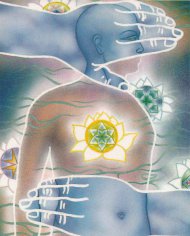The herd dug up and drained vats of corn wine in a village in Yunnan Province.
Meanwhile few #elephants decided to use alcohol to sanitize trunks in Wunnan, China. They were raiding crops somehow found wine. And the look after drinking too much. As a fact elephants are fond of alcohol, they are good at finding that also, especially Handiya in tribal belts. pic.twitter.com/K77fYuiFqrMarch 18, 2020
Large public gatherings are currently prohibited in many places to prevent the spread of the new coronavirus, but that didn’t stop a group of Asian elephants from partying in a field in Yunnan Province in China, where they found and drained vats of corn wine.
Two elephants drank so much wine that they passed out in a tea garden.
A photo of the inebriated elephants — lying curled up back to back on a dirt bed amid the greenery — went viral after it was shared on Twitter on March 18 by Parveen Kaswan, a conservationist and an Indian Forest Service officer. Kaswan mentioned in the tweet that wild elephants have a taste for booze, quipping that these particular pachyderms had turned to alcohol “to sanitize [their] trunks,” and were sleeping off the aftermath.
Asian elephants () inhabit grasslands and forest habitats across countries in southern Asia, and there are estimated to be fewer than 50,000 of them in the wild, the World Wildlife Fund says.
But in China there are only 250 of these elephants left, and they face the looming threat of local extinction, Kaswan tweeted.
In another tweet, Kaswan posted a photo of the elephant herd “when they were all sober,” clustered together amid rows of crops. In forest regions where the elephants live, locals are aware of the animals’ interest in human-made alcohol, Kaswan said. But even when people bury their liquor, “somehow elephants find it,” Kaswan wrote in the tweet.
Elephants will even “mark” locations where they have previously found alcohol and come back later to see if there’s more, Kaswan added.
When they were all sober. In tribal belts people hide country made alcohol but somehow elephants find it. They mark the houses also where they found that last time. If they see drunk people they get irritated also, since it was not shared with them. All credits in pics. 11/3/20 pic.twitter.com/ESYtPsrd68March 18, 2020
Persistent rumors and anecdotes had long suggested that African elephants regularly become drunk on fermented marula fruit, though scientists determined more than a decade ago that this was likely a myth. An animal the size of an elephant — weighing more than 6,600 lbs. (3,000 kilograms) — would have to consume 400 times the amount of fruit in its normal diet and not drink any water for the alcohol to make it intoxicated, researchers reported in 2006 in the journal Physiological and Biochemical Zoology.
However, elephants that come across caches of liquor or wine might guzzle the beverage for its sweet taste, which could lead to drunkenness, Shermin de Silva, a cofounder of Sri Lanka’s Elephant Forest and Environmental Trust, previously told Live Science.
Other types of wild creatures have demonstrated the effects of consuming too much alcohol. In 2011, a moose in Sweden got drunk after eating fermented apples and wound up entangled in a tree, according to the Smithsonian. White-tailed deer often browse on fermented apples in orchards, making them “stumble-y” and “sleepy,” Don Moore, associate director of the Smithsonian National Zoo in Washington, D.C., told National Geographic.
And chimpanzees, our closest living primate relatives, appear to enjoy the taste of alcohol, soaking up fermenting palm sap with leaves and then squeezing the booze into their mouths, Live Science previously reported.
But there’s one animal that imbibes more than any other — the Malaysian pen-tailed shrew. The shrews’ diet consists entirely of fermented nectar that is about 3.8% alcohol, suggesting that the shrews would be perpetually drunk. However, despite the nectar’s high alcohol content, the shrews have evolved to metabolize it so efficiently that they don’t become inebriated at all, scientists discovered in 2008.
OFFER: Save at least 53% with our latest magazine deal!
With impressive cutaway illustrations that show how things function, and mindblowing photography of the world’s most inspiring spectacles, How It Works represents the pinnacle of engaging, factual fun for a mainstream audience keen to keep up with the latest tech and the most impressive phenomena on the planet and beyond. Written and presented in a style that makes even the most complex subjects interesting and easy to understand, How It Works is enjoyed by readers of all ages.
View Deal
Sourse: www.livescience.com




